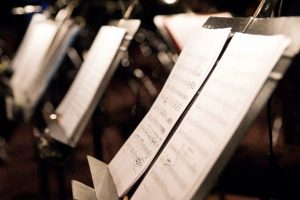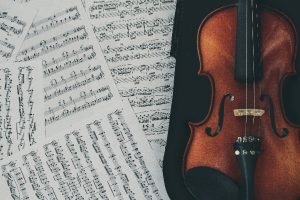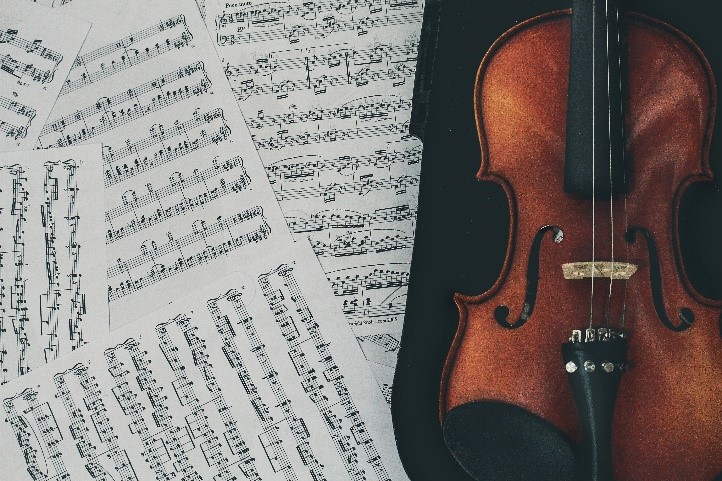If I played “Blue Danube” by Johann Strauss II, you would probably recognize the song immediately. In fact, there are dozens of classical pieces that many of us are probably familiar with, even if we don’t listen to classical music regularly. Copyright for classical music can sometimes cause issues for YouTubers and other internet content creators. For example, a YouTuber might think that they are free to play a song because the composer has been dead for centuries. However, the recording they choose to play in their videos might be protected by copyright law and result in the video being taken down! Two content creators named Ludwig Ahgren and “JSchlatt” took it upon themselves to solve some of their copyright problems once and for all. To understand what they did and how they did it, we should talk about copyright law first. Specifically, let’s look at the distinction between copyright protection over a musical composition versus a sound recording.
How Copyright Works
Copyright is a type of intellectual property right that allows artists, musicians, and creators the ability to protect their work. A copyright gives the owner exclusive rights to 1) reproduce the copyrighted work, i.e., make a copy of it; 2) to make derivative works based on the copyrighted work, like a sequel or spin-off; 3) to distribute copies of the copyrighted work to the public, like selling copies of a painting; 4) to publicly perform the copyrighted work, like performing a play in a theater; 5) to display art publicly, like hanging art in a museum; and 6) to perform sound recordings by digital audio transmission, like streaming a song from Spotify.
Copyright protection for works created since the most recent Copyright Act (since 1978) lasts from the moment the work is created until 70 years after the author’s death. If a work is made in cooperation with someone else (called “joint work”), protection lasts for 70 years after the last author’s death. A copyrighted work can also be “made for hire,” meaning it’s been created for an employer or commissioned as a work for someone else. If the work is created for an employer, the creator must have been acting within the scope of their employment (meaning they created the work as a part of their job and not on their own). If the work is commissioned, there needs to be a signed agreement between the parties and the work needs to fit into one of the specific categories listed by law. Protection for a work made for hire lasts for 95 years from the date of publication or 120 years from creation, whichever is shorter.

How is Music Protected?
It’s possible to obtain two types of copyright over music: copyright in the “composition” and in the “sound recording.”
Copyright over the “composition” protects the song by protecting the arrangement of notes, lyrics, and musical elements as they were written in the song. Copyright over the “sound recording,” though, protects the version of the song a listener is likely to hear on the radio or on Spotify. Copyright law prevents the “performing” of a sound recording even if the recording is broadcast via a streaming service rather than performed live. Remember that these two copyrights are different, because this will be important later!
Copyright Law for the Digital Age
Passed in 1998, the Digital Millennium Copyright Act (DMCA) made amendments to U.S. copyright law to keep up with the rapidly expanding internet. One big development the DMCA addressed is the ability for everyday people to upload content to hosting websites like YouTube, Instagram, or Twitter. Imagine, for example, that someone uploaded a YouTube video of music written and performed by the Beatles. Although the user posted the video, it’s YouTube who is hosting the video on its website. Therefore, it’s YouTube who would be liable for infringing on the Beatles’ copyright.
To remedy this, the DMCA created the “notice-and-takedown” process. The process outlines steps for copyright holders to “give notice” that their copyright is being infringed to websites and online platforms. This is called a “copyright removal request” or a “takedown notice”. Then, the platform can take down the infringing material to avoid being held liable for violating the copyright holder’s rights. If the person who uploaded the video feels that they have a valid defense, (e.g., the individual holds a license from the copyright holder), they can submit an appeal to YouTube requesting that the video be reuploaded.
Using our Beatles example: once the Beatles’ copyright owner (Paul McCartney and Sony/ATV) realizes that someone has posted a video playing the Beatles’ music on YouTube, they can send a request to YouTube for the video to be taken down. Then, YouTube can remove the video before it is held liable for copyright infringement. If the person who uploaded the video thinks they should be allowed to use the Beatles’ music, they can submit an appeal to YouTube. The whole process is a bit confusing. If you’re curious to learn more, YouTube has a Help Center that goes into more depth on the process.
How YouTube Spots Copyright Infringers
I can tell what you’re thinking: is Paul McCartney really spending all day on YouTube looking for videos playing his music? Of course not. It’s unlikely that he (or anyone) has enough time in the day to keep a vigilant watch out for any copyright infringers, especially given how big the internet is.
What’s more likely is that Paul – and anyone else with major copyright ownership rights like movie studios and record labels – uses YouTube’s automated copyright monitoring system called Content ID. Content ID compares uploaded videos to its database of copyrighted material. Paul McCartney didn’t stumble upon the infringing YouTube video by chance. Instead, Content ID recognized that the music playing in the video was the same as the Beatles music it has stored in its system. Once Content ID finds a match, a few things can happen depending on the Content ID settings the copyright owner chooses. Content ID might block a video from being watched entirely, it could monetize the video by playing advertisements on it, or it could track the video’s statistics and relay them to the copyright holder. Content ID claims happen automatically, and the only role the copyright holder plays is in choosing what they want Content ID to do when it finds a match.

Ludwig and JSchlatt’s Master Plan
When content creators like Ludwig or JSchlatt stream or film videos for YouTube, it’s typical for them to go to YouTube or Spotify to play music in the background. Ludwig is a fan of classical music: “Ride of the Valkyries” by Wagner, “Winter” from Vivaldi’s Four Seasons, “Russian Dance” by Tchaikovsky, and so on.
Classical music is in a tricky spot when it comes to copyright protection. Remember from earlier that copyright for a work lasts for 70 years after a creator’s death? Many of the classical musicians we’re all familiar with like Vivaldi, Strauss, Bach, or Tchaikovsky have all been dead for centuries now. This means that the copyright for their compositions has lapsed, and that the compositions are now in the public domain for others to copy or perform for free. The copyright of the composition isn’t the issue, though!
Many of the sound recordings content creators play on their streams and videos were recorded within the past few decades, so the sound recordings themselves are still under copyright protection. Content ID hears the copyrighted sound recordings and demonetizes or blocks the content creator’s video.
Ludwig and JSchlatt put their heads (and wallets) together to solve the problem. They hired an LA-based orchestra to perform some of their favorite classical music and posted it to a new YouTube channel called “Lud and Schlatts Musical Emporium.” The orchestra performed music in the public domain, so they didn’t need to worry about copyright over the musical compositions. Because the orchestra was performing the compositions itself and not reproducing copyrighted sound recordings, it avoided any copyright infringement. Ludwig and JSchlatt uploaded each video they posted under “Creative Commons,” a type of license that allows the copyright owner to retain their copyright but easily allows other creators to reuse the work without individually requesting permission.
This solution is a great fit for Ludwig and JSchlatt. They’re able to coordinate with the orchestra to perform their favorite songs (so long as the music is in the public domain), and they can tailor each recording to highlight portions of the pieces they like the most. In fact, they trim most of the songs to feature only the most memorable parts (and to save money on the recording fees, of course).
“Lud and Schlatt’s Musical Emporium” is a hit so far, with hundreds of thousands of views per video. The quality of each video is astounding! As someone who has been watching Ludwig’s streams and videos for years, I can hardly tell the difference between the recordings he uses now and recordings he played before that were owned by various copyright holders. Ludwig says that they’re already planning what to upload next. I think the channel is a creative way to get around issues affecting many content creators. Here’s to hoping the channel keeps uploading quality recordings for everyone to use!

Connor Druhan
Associate Blogger
Loyola University Chicago School of Law, J.D. 2024
